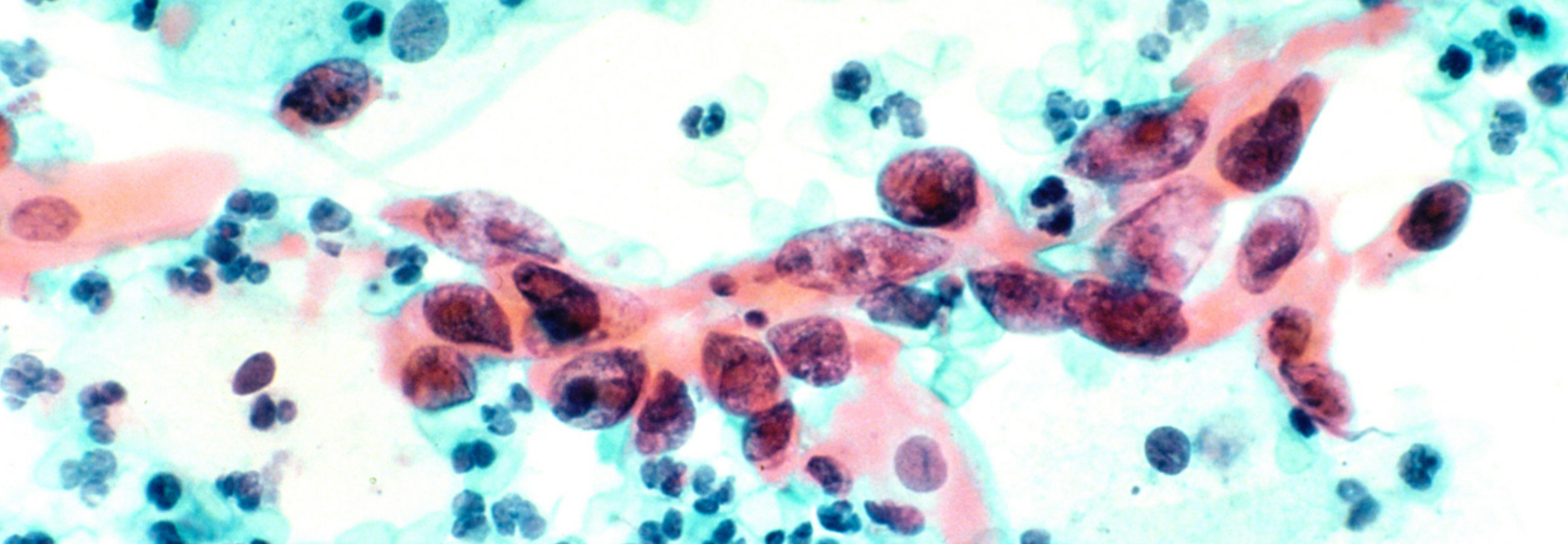During an annual “well-woman” visit, it is customary to perform a pelvic exam to screen for cancers of the reproductive system. These cancers include uterine cancer, ovarian cancer, and cervical [Origin: Latin, cervix (neck)] cancer. The last one is especially noteworthy, thanks to the development and implementation of the most successful cancer screening test in medical history: the Pap test. This screening test swabs the cervix of the uterus and assesses the morphology of the obtained cells. If the cells are atypical, the gynecologist obtains a cervical biopsy to further assess the situation and take the appropriate measures.
What is the etymology of “Pap” in “Pap test?” Turns out that this is not from an ancient Greek root; rather, it’s from a modern Greek physician! Georgios Papanikalaou (1883-1962) drew inspiration from Walter Hayle Walsh (1812-1892) when the latter reported on the observation of malignant cells under the microscope in certain lung diseases. In 1928, Papanikalaou presented his technique to an audience of physicians:
- Gather cellular debris from the vaginal tract
- Mount it on a microscope slide
- Stain it with the Pap stain (haematoxylin counterstained with OG-6 and eosin azure)
 Left: Georgios Papanikalaou, right: Aurel Babeş
Left: Georgios Papanikalaou, right: Aurel Babeş
Even though Papanikalaou first developed and demonstrated the use of this technique, it turns out that another physician—Aurel Babeş—made similar progress regarding the microscopic analysis of malignant cells. Babeş used a platinum loop to collect cells from the cervix and mounted the sample on a microscope slide. Babeş published before Papanikalaou, but Papanikalaou used the technique in hospitals before Babeş published. For this reason, we give it the name of “Pap test,” but in Romania, it is called the “Babeş-Papanikalaou test” in honour of Babeş’s independently-developed method. In Spanish, the “Pap” is said in full, i.e., it is “la prueba de Papanikalaou”: the test/probing of Papanikalaou!
There is another gynecologic eponym [Origin: Greek, epi- (on/upon) + onoma (name)] that most people don’t readily recognize. Gabrielle Falloppio (1523-1562) was an Italian physician and anatomist who primarily explored the anatomy of the head: he described the inner ear, the middle ear, the mastoid cells, and the circular & oval windows, among many other structures. He also studied the reproductive systems of both males and females—including the structures that connect the ovaries to the uterus. For those that prefer non-eponymous nomenclature, an alternative name for the Fallopian tubes is uterine tubes. Note that Falloppio’s name is spelled with 2 “p”s, but we only use one “p” in Fallopian! (In Spanish, it is cut down by an extra “l,” spelled “Falopio.”) Falloppio also advocated the use of condoms to prevent syphilis and conducted an early clinical trial of sorts; he observed that the approximately 1100 men who used condoms and reported to him did not contract syphilis.
 Left: Gabriele Falloppio, right: a 16th century prophylactic device
Left: Gabriele Falloppio, right: a 16th century prophylactic device
If the Fallopian tubes and the ovaries are afflicted with cancer and need to be removed, what words do we use to describe the surgery? For the Fallopian tubes, we use salpingectomy, and for the ovaries, we use oophorectomy.
Salpingectomy
Origin: Greek, salpinx (trumpet) + ek- (out of) + temnein (to cut) + -ia (condition of)
A cutting out of the trumpet, i.e., the Fallopian/uterine tube
N.B. (nota bene): in Spanish, they are called “las trompas de Falopio”: tube/horn of Falloppio!
Oophorectomy
Origin: Greek, oion (egg) + pherein (to carry) + -ectomy (a cutting out)
A cutting out of the egg-carrier, i.e., the ovary
And if both entities need to be removed, we call it a salpingo-oophorectomy. This term denotes that only one ovary and one Fallopian tube is excised; if both are excised, we append bilateral [Origin: Latin, bi- (two) + latus (side)] to the procedure for a bilateral salpingo-oophorectomy.

Long live Magister Arek!
Your writing skills are amazing! I really love it! Can you review my website https://www.gdiz.eu.org and maybe you can share tour thought about mine?